Jardín Millenium Forest de Gyeongbuk (경북천년숲정원)
11.9Km 2025-03-19
Tongil-ro 366-4, Gyeongju-si, Gyeongsangbuk-do
Petroglifos de Bangudae en Daegok-ri de Ulju (울주 대곡리 반구대 암각화) [Patrimonio Mundial de la Unesco]
12.0Km 2025-07-17
San 234-1, Daegok-ri, Eonyang-eup, Ulju-gun, Ulsan
En el distrito de Daegok-ri, Eonyang-eup, se encuentra la zona de Bangudae, un pintoresco lugar donde la cresta del monte Yeongosan se extiende y se eleva, creando un espectáculo espectacular con rocas y acantilados de formas únicas. El nombre, Bangudae, proviene de su semejanza con una tortuga tumbada en el suelo. Los petroglifos son pinturas realizadas por personas de la prehistoria, talladas en rocas, que representan diversas escenas y eventos de su vida cotidiana. A menudo se dibujaban en enormes rocas y otros lugares sagrados, y se cree que la gente se reunía alrededor de ellos para celebrar diversos rituales.
Se estima que los petroglifos de Bangudae en Daegok-ri fueron dibujaron a lo largo de varios períodos desde el Neolítico, y los visitantes pueden observar las diferencias de estilo entre las distintas épocas. Entre los principales objetos tallados popularmente se incluyen animales marinos, animales terrestres, seres humanos y herramientas. Dado que los ancestros prehistóricos se dedicaban activamente a la caza, se cree que la esperanza de obtener presas abundantes es la razón por la que estos objetos se tallaban frecuentemente en rocas. Expresando vívidamente animales y escenas de caza, y representando con colorido las características excepcionales de los objetos, estos petroglifos son una forma tanto de arte cinegético como de arte religioso, y se consideran obras maestras que ofrecen un vistazo a la vida y las costumbres de la prehistoria. Los petroglifos de Bangudae y los de Cheonjeon-ri, que se extienden por 3 km a lo largo del arroyo Bangucheon, fueron inscritos en la Lista del Patrimonio Mundial de la Unesco el 12 de julio de 2025.
Tumbas Reales Oreung de Gyeongju (경주 오릉)
12.5Km 2025-03-19
Geumseong-ro 38-9, Gyeongju-si, Gyeongsangbuk-do
Kelimgung (계림궁)
12.7Km 2025-07-18
932, Poseok-ro, Gyeongju-si, Gyeongsangbuk-do
Kelimgung is a comfortable hanok pension near the Oreung tombs in, Gyeongju, Gyeongsangbuk-do; the name derives from Gyerim, the forest birthplace of Kim Alji who helped found the ancient Silla kingdom. The main building has four rooms and a shared kitchen, and there are two guest rooms in the yard, where barbecues can be held; reservations are required. Residents can experience traditional activities such as Gamasot cooking and Neolttwigi, and enjoy strolling in the nearby Oreung. Other nearby attractions include Banwolseong, Cheomseongdae, and Daereungwon.
Tumba del Rey Muyeol y Estela del Rey Taejong Muyeol (경주 무열왕릉, 태종무열왕릉비)
12.8Km 2025-05-23
Neungnam-gil 10-4, Gyeongju-si, Gyeongsangbuk-do
La tumba real del rey Muyeol es de Kim Chun-chu, quien subió al trono como 29º gobernante del Reino de Silla. Este rey intentó unificar los tres reinos aliando fuerzas con la dinastía Tang de China, pero falleció antes de que pudiera lograr su objetivo con éxito. Al este de la tumba, se encuentran los restos de su estela con una inscripción que dice: “Taejong Muyeol Daewangjibi (lápida del Gran Rey Muyeol)”.
Gyeongju Oreung Hanok (경주오릉한옥)
12.9Km 2025-07-18
12-17, Gukdang 2-gil, Gyeongju-si, Gyeongsangbuk-do
Oreung Hanok in Gyeongju, is a guesthouse just across Namcheon Stream from Gyeongju’s Five Royal Tombs (‘oreung’ in Korean). The guesthouse’s location gives it a panoramic view not only of the tomb complex but over much of the 1,000 year old city of Gyeongju. The cozy rooms have double doors to block drafts and noise, and clean white bedding; while the spacious yard outside is a good spot for taking photos. The bustling Hwangnidan Street is a 15-minute walk away, while must-see sites Cheomseongdae, the Daereungwon tomb complex, Donggung Palace and Wolji Pond are 10 minutes away by car.
Gyeongjuhanok 1st (경주한옥1번가)
12.9Km 2025-07-24
20, Cheonwon 1-gil, Gyeongju-si, Gyeongsangbuk-do
Standing at the entrance of Cheonwon Village in Gyeongju, Gyeongsangbuk-do, Gyeongju Hanok First is a hanok stay combining the beauty of tradition with modern convenience. All rooms are Korean-style with comfortable bedding on the floor, and all have a toilet and bathroom. One guestroom has its own kitchen, while the others have basic cooking facilities in a shared kitchen. The spacious yard is decorated with figurines in traditional clothes. Nearby tourist attractions include Anapji Pond, Cheomseongdae Observatory, and Gyeongju Museum.
Cheongjae Hanok (청재한옥)
12.9Km 2025-04-11
Bulguk-ro 163, Gyeongju-si, Gyeongsangbuk-do
Huewon (경주휴원)
13.0Km 2025-06-04
154, Chunghyoseoak-gil, Gyeongju-si, Gyeongsangbuk-do
Tumba de la Reina Seondeok en Gyeongju (경주 선덕여왕릉)
13.2Km 2022-08-03
Bomun-dong, Gyeongju-si, Gyeongsangbuk-do.
Esta tumba se encuentra situada en la ciudad de Gyeongju, y corresponde a la 27ª mandataria del reino de Silla (57 a.C.-935 d.C), la reina Seondeok (período de reinado: 632-647). Fue hija del rey Jinpyeong, quien no tuvo un heredero varón, por lo que logró ser la primera mujer en ocupar el trono en la historia de Silla. Durante sus 14 años de reinado, se construyeron el templo Bunhwangsa y el observatorio Cheomseongdae, también ordenó la construcción de la famosa pagoda de madera de 9 pisos del templo Hwangnyongsa, un logro de la arquitectura budista. Además, tuvo bajo su autoridad a Kim Chunchu, quien en el futuro se convirtió en el rey Muyeol, y al general Kim Yu-sin, ambos personajes cruciales para la Unificación de los Tres Reinos, es decir, ella sentó las bases para que dicho acontecimiento pudiese tener éxito. Pero lamentablemente, por ser una mujer inquietó a la autoridad real, y así surgió la rebelión. Por desgracia, falleció en su transcurso en el año 647, 23 años antes de que se realizara la unificación. La tumba es circular, con un contorno de 73 m, y posee 2 capas de piedras naturales por debajo del túmulo para su protección; sin otros detalles en especial, en comparación con otras tumbas reales, presenta un tamaño de menores dimensiones. En sus cercanías se encuentran otros lugares históricos de importancia.
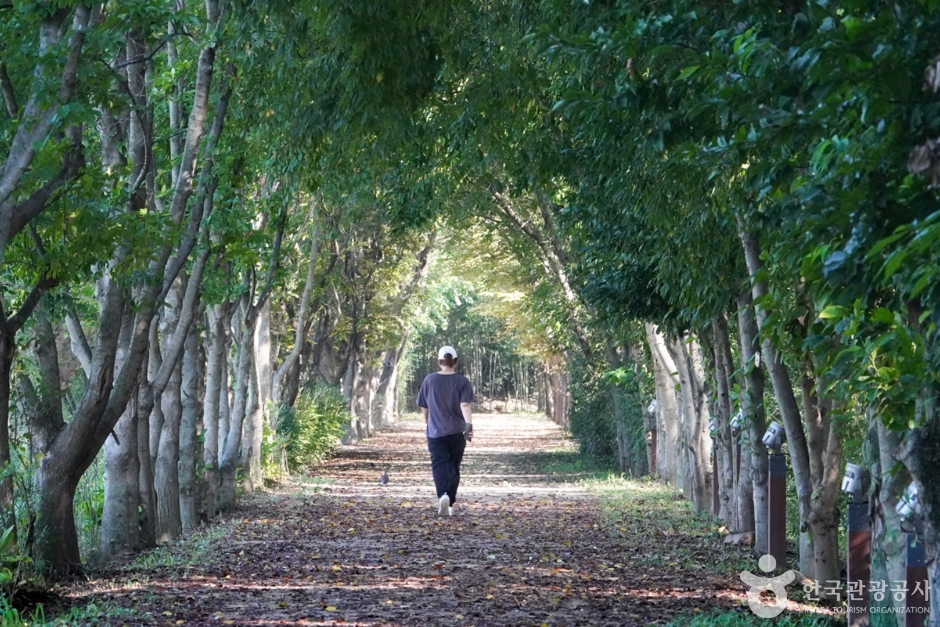
![Petroglifos de Bangudae en Daegok-ri de Ulju (울주 대곡리 반구대 암각화) [Patrimonio Mundial de la Unesco]](http://tong.visitkorea.or.kr/cms/resource/85/3507485_image2_1.jpg)
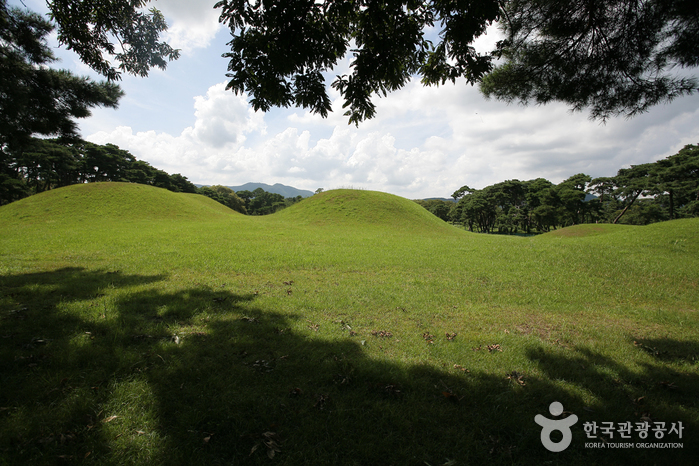

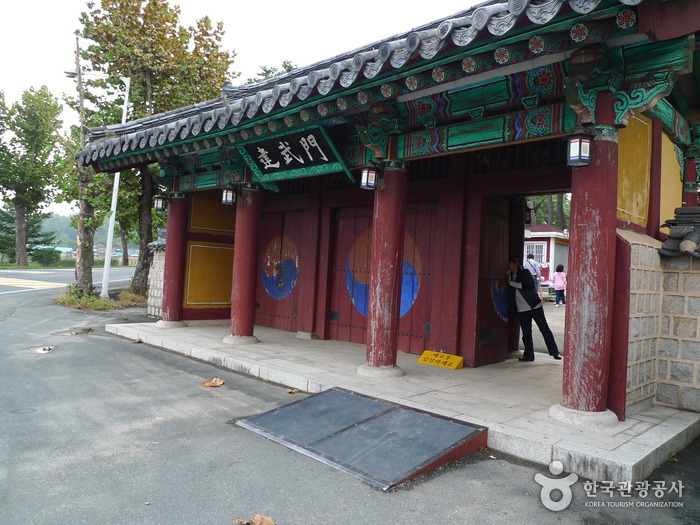
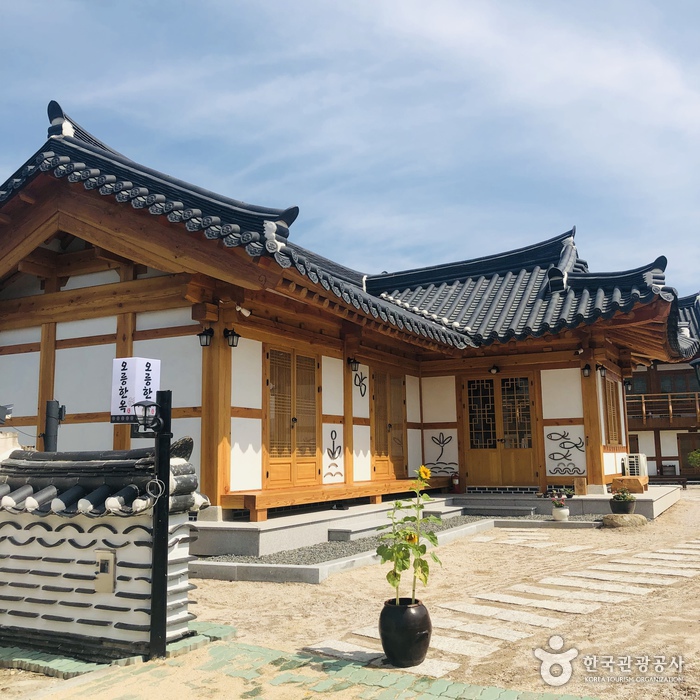
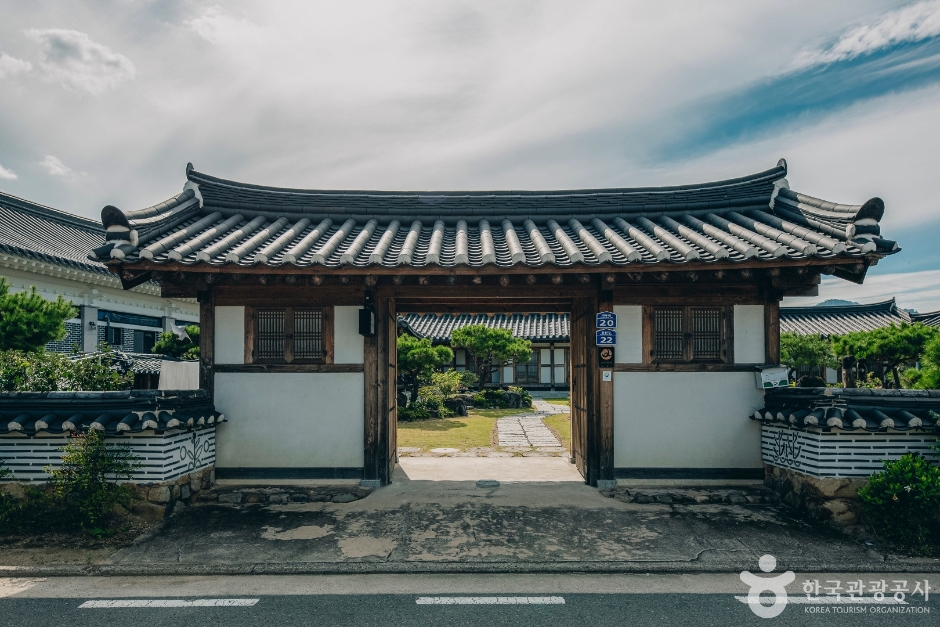
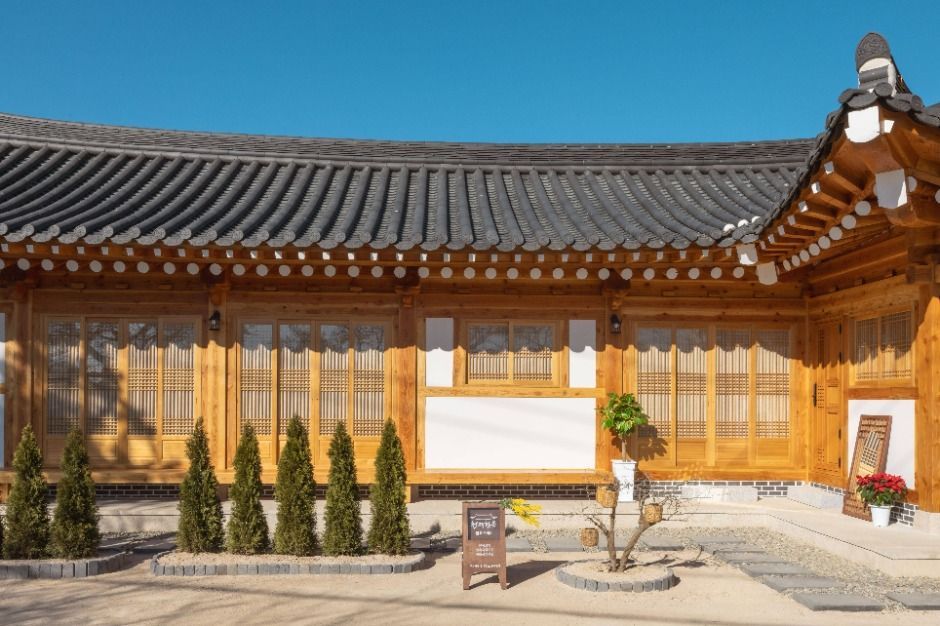
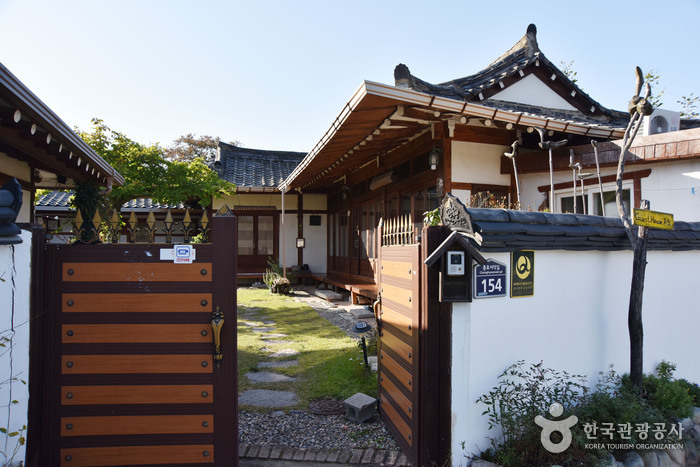
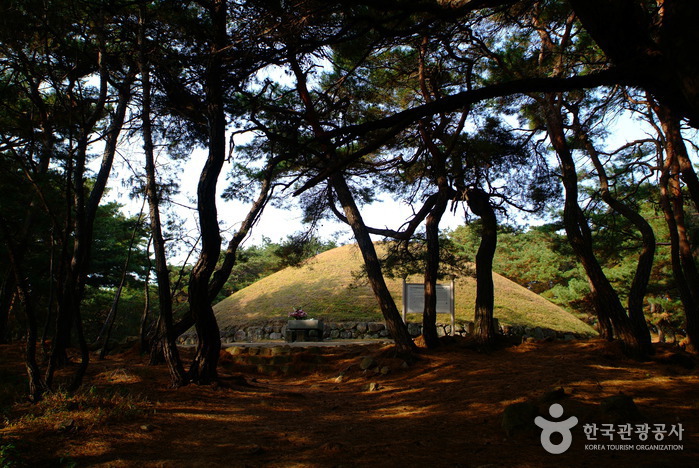
 Español
Español
 한국어
한국어 English
English 日本語
日本語 中文(简体)
中文(简体) Deutsch
Deutsch Français
Français Русский
Русский